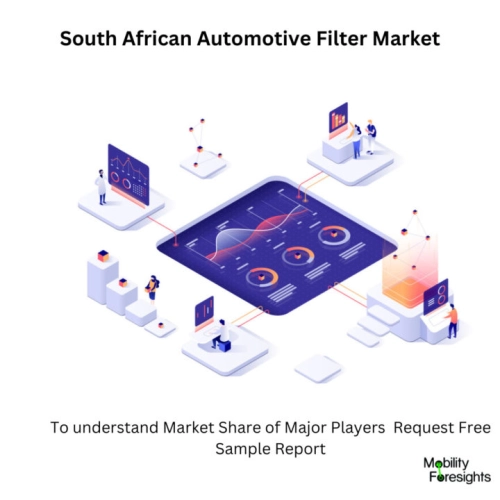
- Get in Touch with Us

Last Updated: Apr 25, 2025 | Study Period: 2023-2030
The manufacturing, distribution, and retail of filters used in cars is referred to as the "automotive filters market." It includes numerous filter types, including cabin air filters, fuel filters, oil filters, and engine air filters. Production of vehicles, maintenance and repair operations, technical developments, environmental legislation, and customer preferences are some of the variables that affect the market.
Factors driving this market can be:Environmental rules: Demand for sophisticated filters that can efficiently capture pollutants and particulate matter, such as diesel particulate filters (DPFs), is driven by environmental rules and strict emission requirements.
Technological developments: The market is expanding as a result of improvements in filter materials, designs, and production techniques. To satisfy changing client expectations, filters are being designed with increased effectiveness, sturdiness, and simplicity of installation.
Rising Demand for Cabin Air Filters: As consumer awareness of air quality and the value of clean cabin air increases, so does demand for these filters. As more customers place a higher priority on their health and comfort while driving, this trend is anticipated to continue.

The South African Automotive Filter Market accounted for $XX Billion in 2022 and is anticipated to reach $XX Billion by 2030, registering a CAGR of XX% from 2023 to 2030.
PL14459 for Purolator Spin-on oil filter for advanced engine protection from PurolatorONE: It is a powerful dirt removal from a medium to a high density synthetic mix. To guard against dry starts and oil leaks, a silicone anti-drainback valve that lasts longer than conventional nitrile is used. Metal centre tubes and end caps offer stability and integrity for increased wear resistance.
A45650 Purolator Advanced Engine Air Filter by PurolatorONE: High-density, multi-fiber medium catches up dirt, dust, and soot. Always consult your owner's handbook for the suggested maintenance schedules for your vehicle. Protects up to 12 months or 12,000 miles. Prevents engine wear; a new air filter may enhance acceleration (U.S. DOE research) and guaranteed only filtered air enters the engine, gaskets create a tight seal.
FRAM Extra Guard Engine Air Filter: TRAPS DIRT AND FILTH: A variety of hazardous dust and dirt particles can accumulate over your engine; however, with FRAM automobile air filter, Extra Guard entraps these particles for a safer, cleaner, and superior engine performance.
For up to 12,000 miles, the FRAM automotive replacement engine filter offers double the protection compared to ordinary filters. EASY INSTALLATION: A quick and smooth replacement. Remove your old filter, replace it with a FRAM engine filter, making sure it is well sealed, then reinstall the cover and secure it.
| 1 | Market Segmentation |
| 2 | Scope of the report |
| 3 | Abbreviations |
| 4 | Research Methodology |
| 5 | Executive Summary |
| 6 | Introduction |
| 7 | Insights from Industry stakeholders |
| 8 | Cost breakdown of Product by sub-components and average profit margin |
| 9 | Disruptive innovation in the Industry |
| 10 | Technology trends in the Industry |
| 11 | Consumer trends in the industry |
| 12 | Recent Production Milestones |
| 13 | Component Manufacturing in US, EU and China |
| 14 | COVID-19 impact on overall market |
| 15 | COVID-19 impact on Production of components |
| 16 | COVID-19 impact on Point of sale |
| 17 | Market Segmentation, Dynamics and Forecast by Geography, 2023-2030 |
| 18 | Market Segmentation, Dynamics and Forecast by Product Type, 2023-2030 |
| 19 | Market Segmentation, Dynamics and Forecast by Application, 2023-2030 |
| 20 | Market Segmentation, Dynamics and Forecast by End use, 2023-2030 |
| 21 | Product installation rate by OEM, 2023 |
| 22 | Incline/Decline in Average B-2-B selling price in past 5 years |
| 23 | Competition from substitute products |
| 24 | Gross margin and average profitability of suppliers |
| 25 | New product development in past 12 months |
| 26 | M&A in past 12 months |
| 27 | Growth strategy of leading players |
| 28 | Market share of vendors, 2023 |
| 29 | Company Profiles |
| 30 | Unmet needs and opportunity for new suppliers |
| 31 | Conclusion |
| 32 | Appendix |